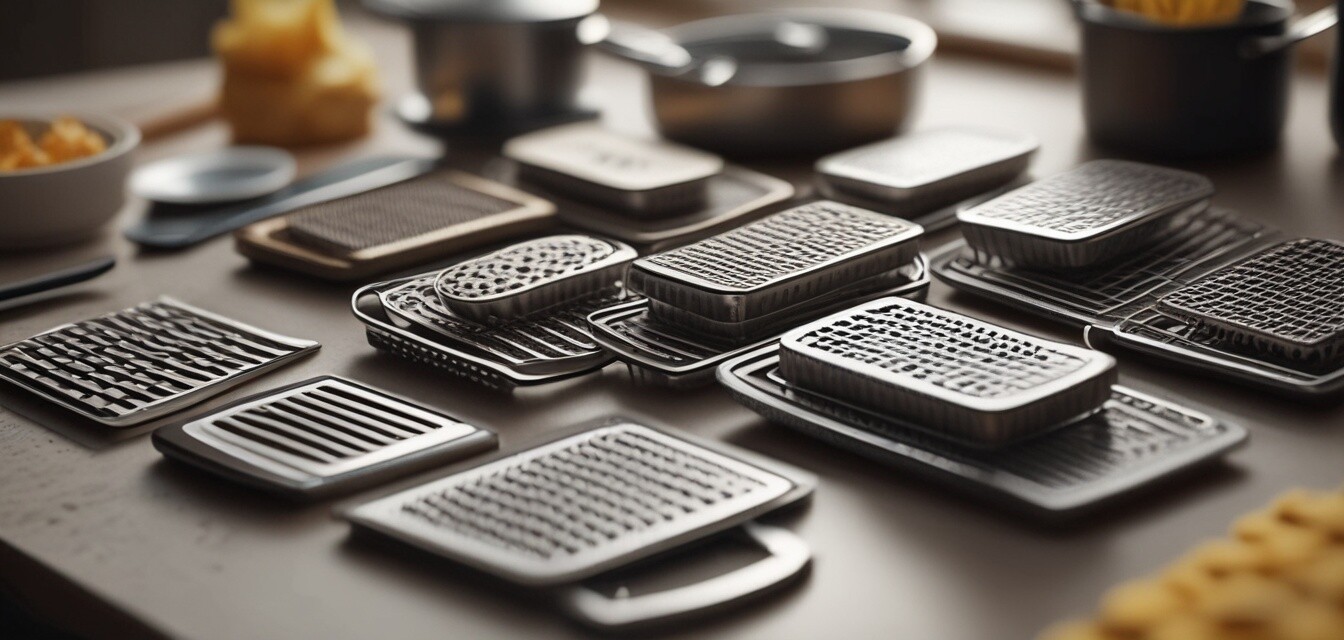
How to select the best grater for your kitchen
Key Takeaways
- Different types of graters serve various culinary functions.
- Choosing the right grater can enhance your efficiency in food preparation.
- Consider factors such as material, size, and ergonomic design.
Graters are essential tools in any kitchen, providing convenience and efficiency when preparing ingredients. From cheese to vegetables, the right grater can make a world of difference in your cooking endeavors. This guide will cover the different types of graters available, their specific uses, and tips on how to select the best one that fits your needs.
Understanding the Different Types of Graters
Graters come in various shapes and sizes, each designed for specific tasks in meal preparation. Below are some common types of graters along with their typical uses:
| Type of Grater | Uses | Best For |
|---|---|---|
| Box Grater | Shredding, slicing, and grating ingredients | Cheese, vegetables, and fruits |
| Microplane Grater | Fine grating and zesting | Citrus zest, garlic, and hard cheeses |
| Plate Grater | Shredding and grating | Carrots, potatoes, and hard cheeses |
| Handheld Grater | Grating small amounts | Cheese and spices |
| Wire Grater | Coarse grating | Vegetables and soft cheeses |
Factors to Consider When Choosing a Grater
Selecting the right grater for your kitchen involves taking into account several factors:
- Material: Look for stainless steel for durability and ease of cleaning.
- Size: Choose a size that fits your storage space and your cooking needs.
- Handle: Ergonomic handles can improve comfort and control while grating.
- Blade Type: Different blade configurations can yield varying textures; consider what you will be grating most often.
Tips for Beginners
- Start with a box grater if you are new to grating; it offers versatility.
- Use a microplane for delicate tasks like zesting or finely grating garlic.
- Always grate away from your body to avoid accidents.
- Keep the grater clean and dry after each use for longevity.
Care and Maintenance of Your Grater
Proper care and maintenance are vital for ensuring your grater remains effective over time. Here are some useful tips:
- Wash your grater by hand after each use to prevent rusting and dulling of the blades.
- Use a brush or sponge to remove food particles stuck in the grating holes.
- Store in a dry environment to prolong the grater's life.
- Sharp graters yield better results; consider sharpening them occasionally.
Comparison of Popular Grater Types
Here is a comparison table summarizing the features of different grater types mentioned earlier:
| Grater Type | Material | Storage | Ease of Use |
|---|---|---|---|
| Box Grater | Stainless Steel | Can be bulky | Intermediate |
| Microplane Grater | Stainless Steel | Compact | Easy |
| Plate Grater | Aluminum or Stainless Steel | Moderate | Easy |
| Handheld Grater | Plastic and Stainless Steel | Compact | Easy |
| Wire Grater | Stainless Steel | Compact | Intermediate |
Where to Buy Quality Graters
If you're on the lookout for high-quality graters, consider checking out our recommendations in the Cutlery and Knives section to maximize your efficiency in the kitchen.
Pros
- Can enhance your cooking experience by saving preparation time.
- A wide variety of graters allows for versatile cooking options.
- Good quality graters are durable and easy to clean.
Cons
- Storage can be an issue due to their size.
- Some types may require more manual effort than others.
- Using incorrect grater types may lead to undesired textures.
Choosing the right grater is integral in making your culinary tasks simpler and more enjoyable. It is an investment in your cooking arsenal that will pay off in the long run. To explore more cooking essentials, visit our Cooking Buying Guides for detailed insights and recommendations suited for both beginners and seasoned chefs.